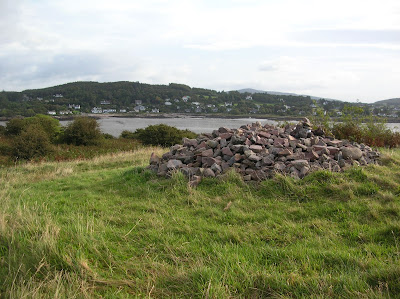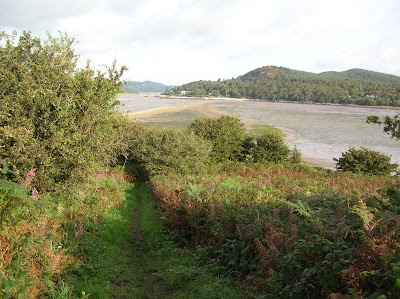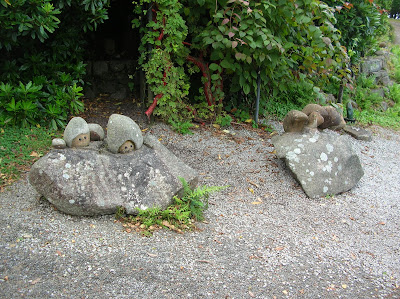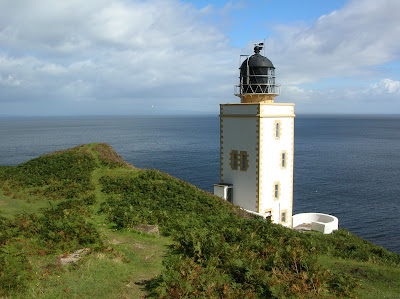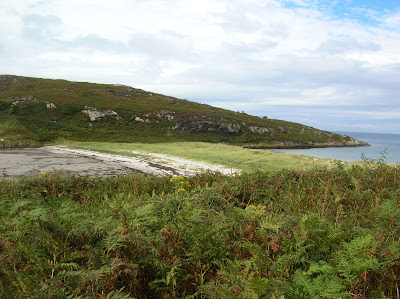The island is owned by the National Trust for Scotland and managed as a bird sanctuary. Access is not permitted in May and June during the breeding season. It covers an area of 8 hectares and is about 500 metres from north to south and 250 metres from east to west.
I parked in the main car park at Kippford but there was parking for about 12 cars half a mile nearer to the Rough Island causeway. The causeway itself is just over half a mile long. I arrived on the beach of whole cockle shells to the south of Kippford and could see the causeway but there was about 200 metres of mud to cross to reach the start of it. Thankfully the mud was hard enough to walk across. Low tide on the day I visited in early September 2012 was at 9.45 am, so I arrived on the island at 8.45 and had it to myself.
I have not been able to find out much about the island. Even the National Trust for Scotland seem to keep quiet about it, as it gets only a passing mention on their webpage about the land they own at Rockcliffe.
The island is covered in scrubby trees (mainly hawthorns), bracken, brambles, grass, gorse and wild flowers. The wildflowers in bloom in early September included scabious, thistles, bird's foot trefoil, ragwort, heather, broom and rosebay willowherb. There were plenty of ripe blackberries, so I ate a few. Down on the rocky beach that fringes the island there were Michaelmas daisies, thrift, sea campion and sea lavender. There is a clear path running up the spine of the island from the northern tip to the summit, which is 24 metres above sea level. The bracken on either side of the summit path looked like it has been managed, presumably to allow more interesting vegetation to flourish.
I thought Rough Island was going to be a bit dull and an anti-climax after all the interesting islands I had visited in the previous fortnight. However I was wrong. On a sunny morning it was a delightful place to 'stand and stare' for a while and being the only person on it added to the experience. I look forward to visiting some more of Dumfries and Galloway's tidal islands in the years to come.
Rockcliffe from the summit cairn
On top of the cairn under a couple of rocks there is a battered tin, which contains a logbook for visitors to write their thoughts in - much like a geocache really. Judging by the comments in the book, some people visit the island regularly.
Summit cairn looking north towards Kippford
Looking north towards Kippford along the causeway
Causeway to Rough Island
Looking north towards Kippford
I think the nets off the east coast of Rough Island are for some kind of traditional fishing
Clear path up the spine of the island to the summit. Looking north towards Kippford.
Hestan Island from the summit of Rough Island
Hestan is in the top right of the photo. It is also a tidal island but the causeway to it, known as the Hestan Rack, only clears when there is a spring tide and then not for very long. It is also a 3 mile way each way from the nearest parking point.
Hestan Island from the summit of Rough Island
Hestan is in the top right of the photo. It is also a tidal island but the causeway to it, known as the Hestan Rack, only clears when there is a spring tide and then not for very long. It is also a 3 mile way each way from the nearest parking point.
Top of the island looking towards the summit
Rough Island from Kippford beach
On the footpath from Kippford to the Rough Island causeway there is a garden, which is full of strange sculptures made from stones, driftwood and other materials. There is even a fairy grotto. The more you look at it, the more you see. I thought it was great.
A couple of the driftwood sculptures
